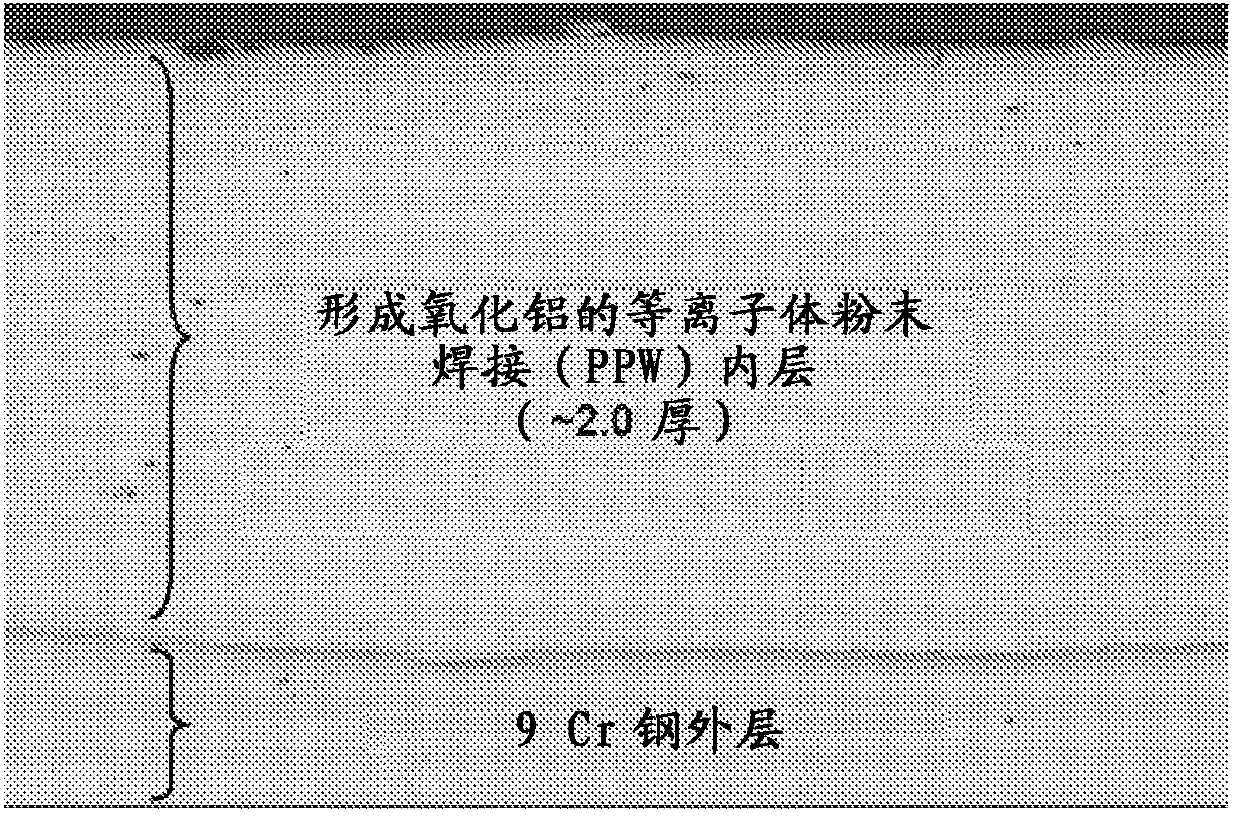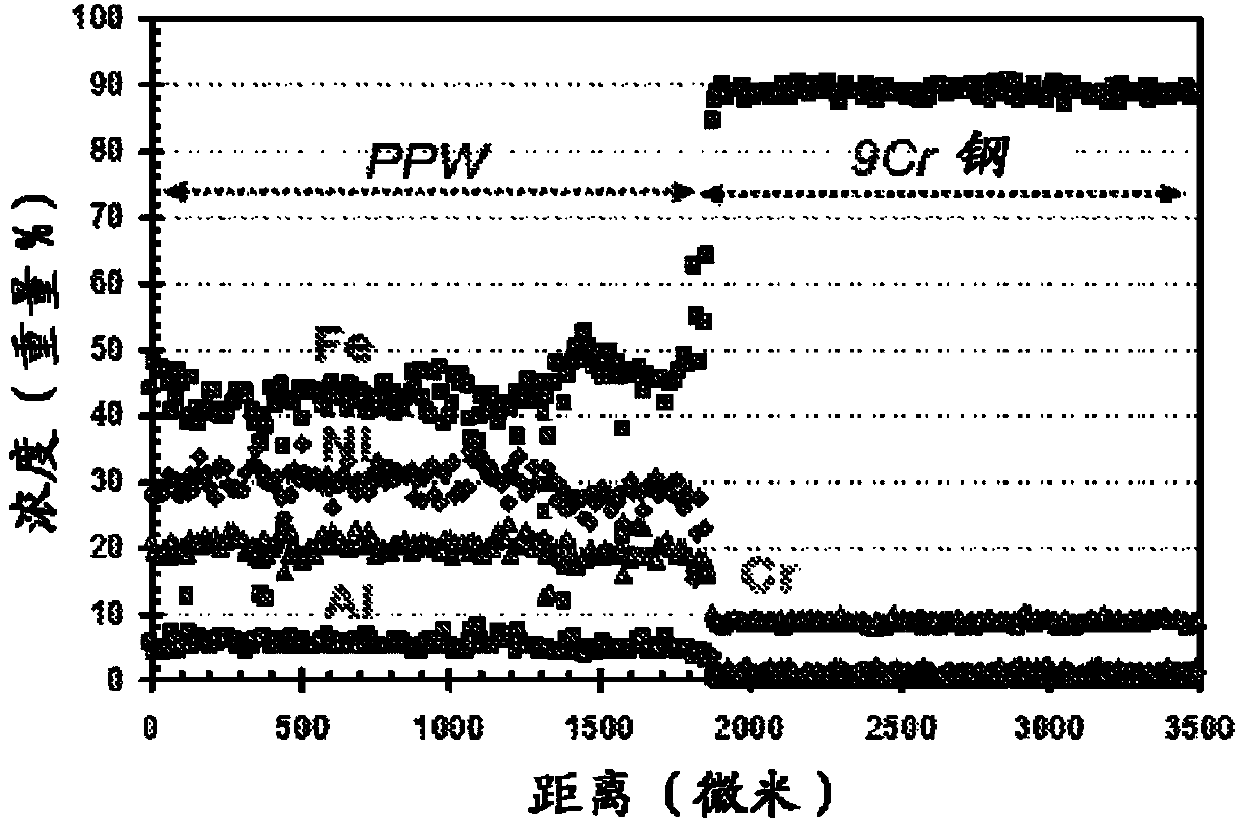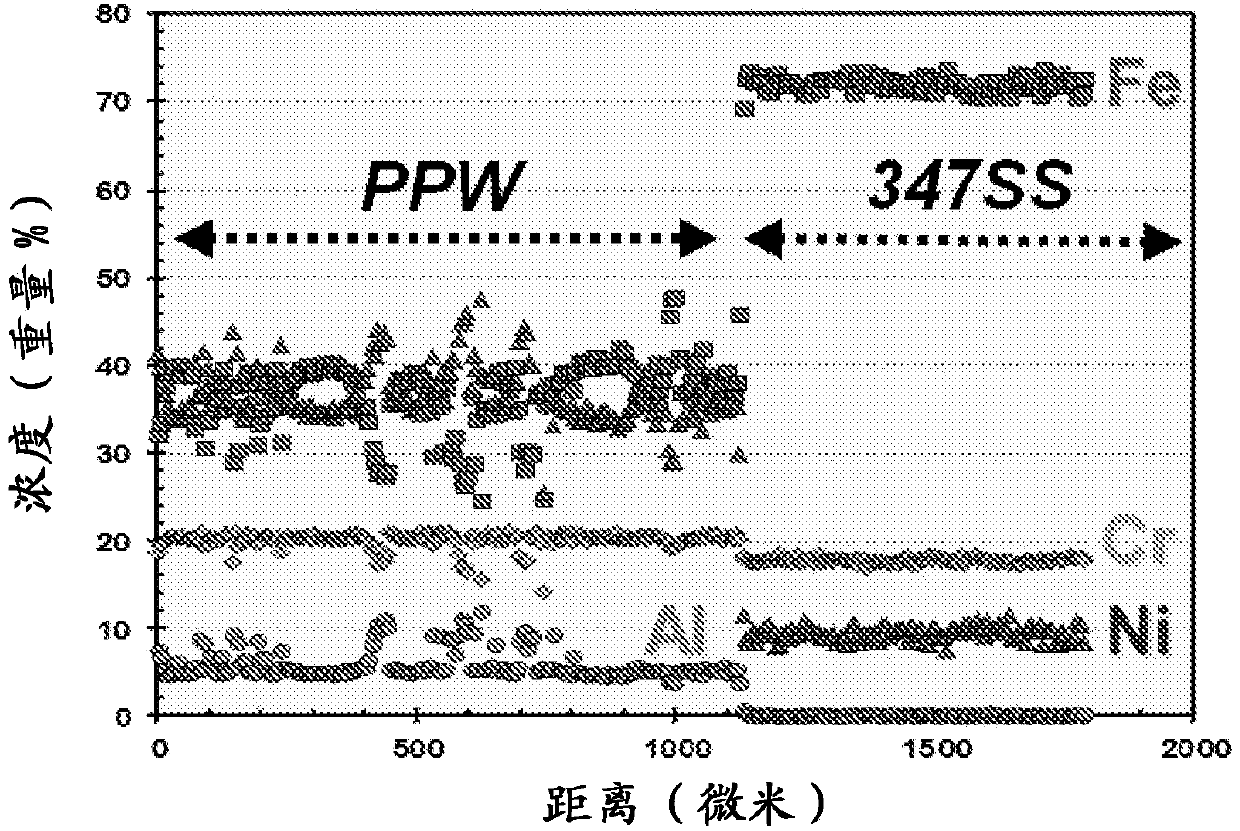Alumina forming bimetallic tube for refinery process furnaces and method of making and using
A bimetallic tube, aluminum oxide technology, applied in chemical instruments and methods, petroleum industry, manufacturing tools, etc., can solve problems such as poor mechanical integrity, thermal stability, and low reliability
- Summary
- Abstract
- Description
- Claims
- Application Information
AI Technical Summary
Problems solved by technology
Method used
Image
Examples
Embodiment 1
[0077] Example 1: Crack-free alumina-forming bimetallic tube made of 9Cr (T9) low chromium steel
[0078] A short section of 9Cr(T9) furnace tube with dimensions 5.00”OD x 4.25”ID x 12.0”L was prepared and the inner surface of the tube was machined for the PPW process. Alumina forming PPW was prepared by argon atomization Powder "M". The powder is sieved to a size for easy flow during the PPW process. The chemical composition of the powder "M" in % by weight is the balance Ni:22.93Cr:6.68Al:33.76Fe: 0.36 Si. Bimetallic tubes were produced by applying powder "M" to the inner surface of a 9Cr furnace tube by the PPW method.
[0079] The resulting bimetallic tube consisted of: i) an outer tube layer of 9.5 mm thick T9 low chromium steel; ii) a 2.0 mm thick inner tube layer formed of aluminum oxide forming alloy lumps; and iii) on the surface of the inner tube layer A 50 nm thick native alumina film was formed. A cross-sectional view of a bimetallic tube revealing the 9Cr stee...
Embodiment 2
[0081] Example 2: Crack-free alumina-forming bimetallic tube made of 9Cr (T9) low chromium steel
[0082] A short section of 9Cr(T9) furnace tube with dimensions 5.00”OD x 4.25”ID x 12.0”L was prepared and the inner surface of the tube was machined for the PPW process. Alumina forming PPW was prepared by argon atomization Powder "O". The powder is sieved to a size for easy flow during the PPW process. The chemical composition of the powder "O" in % by weight is the balance Ni:24.20Cr:6.25Al:32.20Fe: 0.14 Si. Powder "O" was applied to the inner surface of the 9Cr furnace tube by the PPW method, thereby manufacturing a bimetallic tube.
[0083] The resulting bimetallic tube consisted of: i) an outer tube layer of 9.5 mm thick T9 low chromium steel; ii) a 2.0 mm thick inner tube layer formed of aluminum oxide forming alloy lumps; and iii) on the surface of the inner tube layer A 50 nm thick native alumina film was formed. A cross-sectional view of a bimetallic tube revealing ...
Embodiment 3
[0085] Example 3 (comparative example): Cracked aluminum oxide-forming bimetal made of 9Cr (T9) low chromium steel Metal tube
[0086] A short section of 9Cr(T9) furnace tube with dimensions 5.00”OD x 4.25”ID x 12.0”L was prepared and the inner surface of the tube was machined for the PPW process. Alumina forming PPW was prepared by argon atomization Powder "N". The powder is sieved to a size for easy flow during the PPW process. The chemical composition of the powder "N" in % by weight is the balance Ni:19.82Cr:7.36Al:39.30Fe: 0.25 Si. Bimetallic tubes were fabricated by applying powder "N" to the inner surface of a 9Cr furnace tube via the PPW method.
[0087] The resulting bimetallic tube consisted of: i) an outer tube layer of 9.5 mm thick T9 low chromium steel; ii) a 2.0 mm thick inner tube layer formed of aluminum oxide forming alloy lumps; and iii) on the surface of the inner tube layer A 50 nm thick native alumina film was formed. A cross-sectional view of a bime...
PUM
| Property | Measurement | Unit |
|---|---|---|
| Thickness | aaaaa | aaaaa |
Abstract
Description
Claims
Application Information
 Login to View More
Login to View More - R&D
- Intellectual Property
- Life Sciences
- Materials
- Tech Scout
- Unparalleled Data Quality
- Higher Quality Content
- 60% Fewer Hallucinations
Browse by: Latest US Patents, China's latest patents, Technical Efficacy Thesaurus, Application Domain, Technology Topic, Popular Technical Reports.
© 2025 PatSnap. All rights reserved.Legal|Privacy policy|Modern Slavery Act Transparency Statement|Sitemap|About US| Contact US: help@patsnap.com



